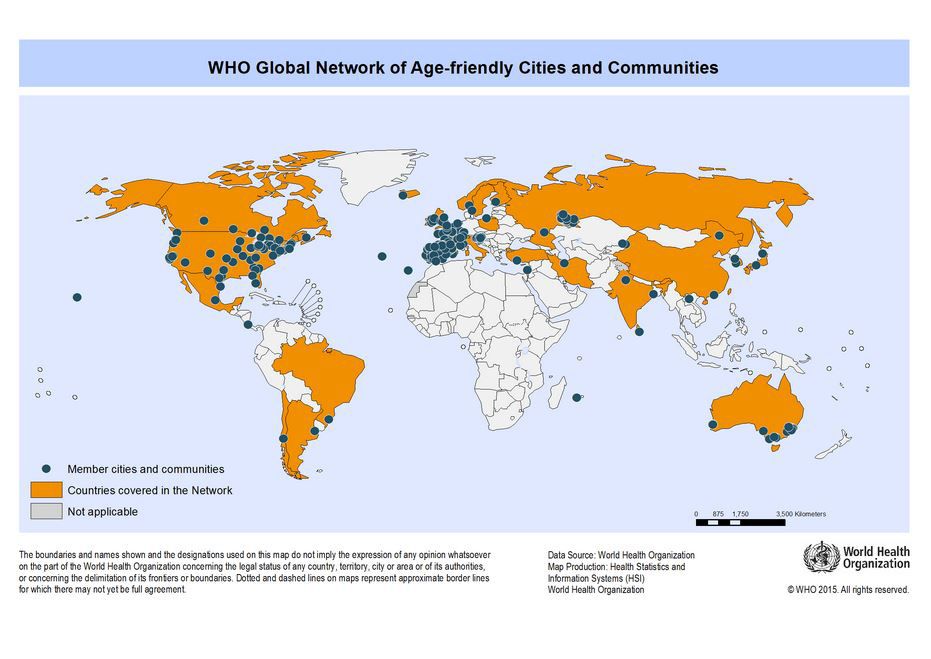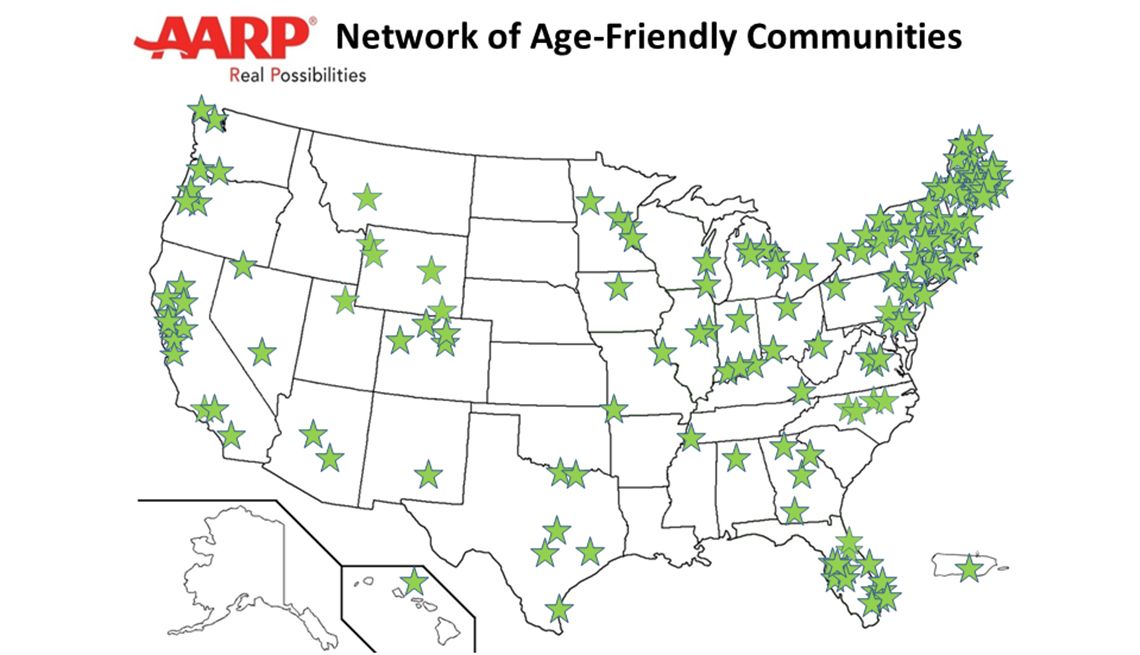Age Friendly Communities Global and National
Global
The World Health Organization’s Global Network of Age-Friendly Cities and Communities was established in 2010 to connect cities, communities, and organizations worldwide with the common vision of making their community a great place to age in place. As a response to global population aging, the network focuses on action at the local level that fosters the full participation of older people in community life and promotes healthy and active aging.
The WHO Global Network of Age-Friendly Cities and Communities provides a global platform for information exchange, mutual learning, and support. Communities join the network with a commitment to becoming more age-friendly and to sharing their experience, achievements, and lessons learned with others. Find about more about the network and its members on WHO’s dedicated website: Age-Friendly World.

As of January 2019, the WHO Global Network of Age-Friendly Cities and Communities included more than 800 member cities and communities in 40 countries, benefiting more than 228 million people worldwide.
National
Established in April, 2012, the AARP Network of Age-Friendly Communities serves as an affiliate of the World Health Organization’s Age-friendly Cities and Communities program. AARP’s participation in the program advances efforts to help people in the United States live easily and comfortably in their homes and communities as they age.
Communities join the AARP Network of Age-Friendly Communities with commitment from elected leadership to actively work toward making their town, city, or county a great place for people of ALL ages. Policies, services, settings, and structures are looked at with a view toward continuous quality improvements.
As of January 2019, the AARP Network of Age-Friendly Communities includes more than 332 U.S. communities, representing more than 75 million people.

